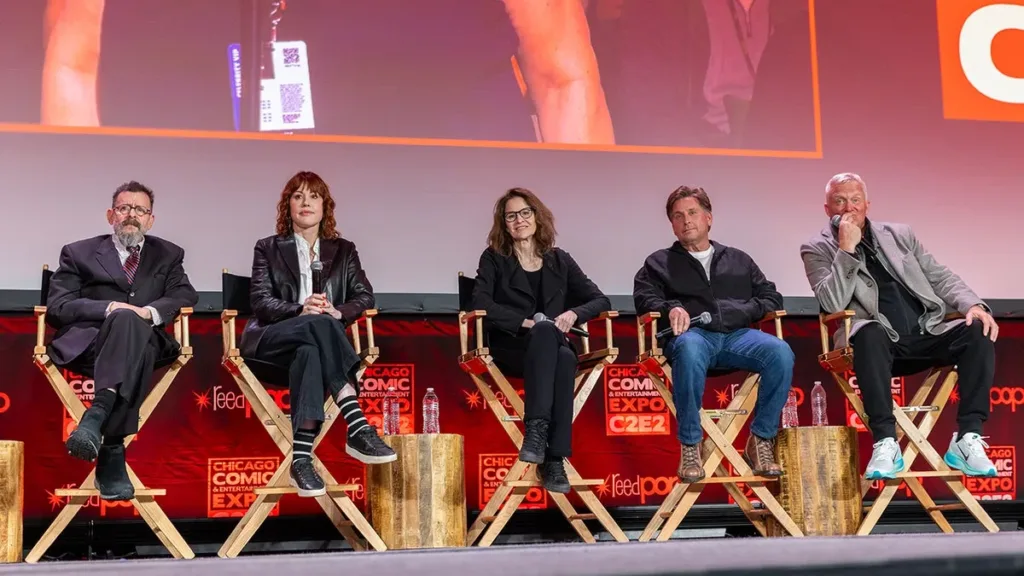Four decades after John Hughes’ The Breakfast Club helped define a generation of teen cinema, the film’s five lead actors appeared together publicly for the first time since its 1985 release. Emilio Estevez, Molly Ringwald, Anthony Michael Hall, Ally Sheedy, and Judd Nelson joined a panel at the Chicago Comic & Entertainment Expo (C2E2) on Saturday, timed near the film’s 40th anniversary.
As the cast took the stage, the crowd greeted them with cheers and applause. The “Colonel Bogey March,” whistled by the characters during their detention day in the film, played over the loudspeakers. The panel covered a wide range of topics, including working with John Hughes, behind-the-scenes memories, and the film’s standing in a different media landscape.
“This is the first time that Emilio has joined us. We don’t have to use the cardboard cutout anymore because he’s here,” said Ringwald. “I feel really very emotional and moved to have us all together.”
Estevez, who had not attended previous reunions, spoke openly about his reasons for taking part this time. “I skipped all of my high school reunions, so this just was something that finally I felt I needed to do just for myself,” he said. “This one felt special. It’s here in Chicago, where we made the film, and obviously the 40th anniversary, and it just felt like it was time.”
The conversation offered a look back at how the film came together. Ringwald recalled that Hughes had planned to make The Breakfast Club before Sixteen Candles, but the studio chose to prioritize the latter. She said Hughes originally offered her the part of Allison but she asked to play Claire. Casting ideas also shifted: Ringwald said John Cusack had once been considered for the role of Bender, and Joan Cusack for Allison.
Nelson spoke about the film’s open-ended structure and how it stayed with him. “The film is about the fact that everyone has to make that decision for themselves—what happens on Monday?” he said. “I felt, personally, that it was one shoe and I needed the second shoe, and that could only come from John.”
The actors spoke about Hughes’ writing style and his ability to create characters who felt real to young audiences. Nelson said Hughes was the first writer he encountered who didn’t treat young people as less experienced versions of adults. Hall added that in his decades-long career, no one else had written for youth with the same clarity and care.
The panel also addressed how the film might be received if it were pitched in the current industry. “Movies today are concept-driven, they’re not character-driven,” Estevez said. “When you think about trying to pitch this movie today — it’s about five kids sitting in a library all day in detention — the studio executives would march you right out the door and say where are the monsters? Where’s the car chases?”
He also noted that the film was made for around $1 million, a modest figure even at the time. He described it as a personal and creative risk, rather than the kind of large-scale studio production that dominates current release schedules.
Ringwald spoke about the limitations of the film through a contemporary lens. “This movie is very much of its time,” she said. “It resonates with people today but… you know it’s very white, this movie. You don’t see a lot of different ethnicities; we don’t talk about gender, none of that, and I feel like that really doesn’t represent our world today.”
Audience members included John Hughes’ son and grandchildren, who were acknowledged during the panel. Several moments during the conversation reflected on the absence of Hughes, who died in 2009, and how his work continues to shape how youth are portrayed on screen.
